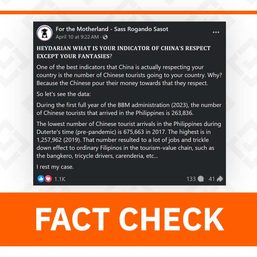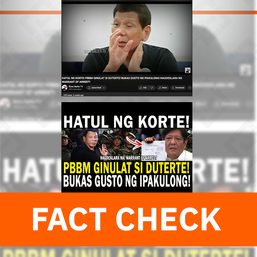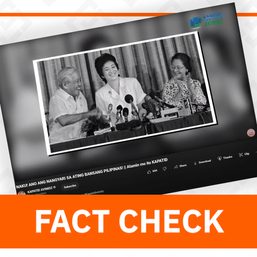SUMMARY
This is AI generated summarization, which may have errors. For context, always refer to the full article.

At a glance
- Claim: President Ferdinand Marcos stopped the construction of the Bataan Nuclear Power Plant (BNPP) in 1979 through Letter of Instruction No. 957, series of 1979.
- Rating: MISSING CONTEXT
- The facts: President Marcos temporarily suspended the construction of the BNPP through Letter of Instruction No. 957. However, he ordered the resumption of the BNPP’s construction after renegotiating the contract between the government and Westinghouse that added new regulatory safety requirements and included new safety features that the Nuclear Regulatory Commission mandated in the United States after the Three Mile Island nuclear incident.
- Why we fact-checked this: The post with this claim has over 1,400 reactions, 1,100 comments, and 1,200 views on Facebook, as of writing.
Complete details
A post saying that former President Ferdinand Marcos stopped the construction of the Bataan Nuclear Power Plant (BNPP) is circulating on Facebook and is shared by multiple Facebook users.
The posts of the claim show an alleged letter of instruction given by Marcos to the ministers of justice, finance, and energy, and the Solicitor General.
The letter, titled “Letter of Instruction No. 957, s. 1979,” said that the BNPP was not safe and was a potential hazard to the health and safety of the public.
The letter also said that the construction of the BNPP was not possible unless Westinghouse, the contractor which built the plant, introduced fundamental changes to ensure the safety of the public.
The letter has been shared by multiple Facebook users, who say it was Marcos who actually stopped the construction of the power plant and not his successor, the late president Corazon Aquino.
This claim is missing context.

While it is true that Marcos suspended the construction of the BNPP through Letter of Instruction No. 957, s. 1979, it was only a temporary suspension meant to update the terms and conditions of the contract entered into by Westinghouse and the Philippine government. Marcos ordered the suspension months after the Three Mile Island nuclear accident in the United States.
Marcos demanded in the letter that Westinghouse should make “fundamental changes in design and adapts additional, adequate and acceptable safeguards to ensure its safety and protect the health of the public.”
He also ordered the “immediate termination and/or renegotiation of the contract” in the said letter.
In September 1980, Marcos ordered the resumption of the construction of the BNPP through Letter of Instruction No. 1065, s. 1980, despite the recommendation of the Puno Commission to halt construction. Marcos formed the Puno Commission to investigate the safety of the BNPP and to answer the questions he raised in Letter of Instruction No. 876, s. 1979.
Westinghouse completed the BNPP in 1983. According to a 1986 CNN article, International Atomic Energy Agency adviser William Albert said that, although not “hopelessly flawed,” it would cost the Philippines millions of dollars to put the power plant in operation.
Albert cited BNPP’s badly welded hanger system, misaligned couplings in the power plant’s cooling tower fan, and badly installed safety plates as major problems of the BNPP that needed to be fixed.
President Corazon Aquino mothballed the BNPP through Executive Order No. 55, citing safety and economic reasons. The order came several months after the Chernobyl nuclear disaster in Ukraine.
The Philippines still pays P40 million to P50 million yearly for the maintenance cost of the BNPP. Plans to revive the BNPP resurfaced after Ferdinand Marcos Jr., son and namesake of the late strongman who built the power plant, won the presidential race in the 2022 elections. – Lorenz Pasion/Rappler.com
Keep us aware of suspicious Facebook pages, groups, accounts, websites, articles, or photos in your network by contacting us at factcheck@rappler.com. You may also report dubious claims to #FactsFirstPH tipline by messaging Rappler on Facebook or Newsbreak via Twitter direct message. You may also report through our Viber fact check chatbot. Let us battle disinformation one Fact Check at a time.
Add a comment
How does this make you feel?





There are no comments yet. Add your comment to start the conversation.